This month, NCLC volunteer Jeff Roehm shares his experience as site steward of Wahanna Marsh–what he characterizes as “saving the planet, one crabapple at a time.” Photos are by Jeff Roehm and Neal Maine.
One day in April 2012, I scheduled a little meeting with the stewardship director at NCLC, Celeste Coulter. I wanted to find some way to volunteer for the trust that I could schedule on my own, since I was having a hard time getting to the work parties from my home in Portland. She had some ideas she thought would work. For one thing, they were applying for accreditation and needed volunteers to visit properties to help meet the stewardship standards. It turned out this meeting was a big turning point for me.
To get me started, Celeste took me out to an NCLC property just across the street from the softball fields in Seaside. This was now called Wahanna Marsh, which has the distinction of being the first property acquired by the trust in 1991. Now it was June 2012, and I was about to become one of our first land stewards. As it turned out, I’d been to this place before. When I was a kid this was the Olsons’ farm. Actually, it was all farms out here—a place known as Bear Valley to the locals. Now as I looked out from the road, instead of seeing a farm, I saw a huge blackberry hedge, and then a thicket of willows and alders, and then some ponds. There didn’t seem to be any way in, which turned out to be more or less true.
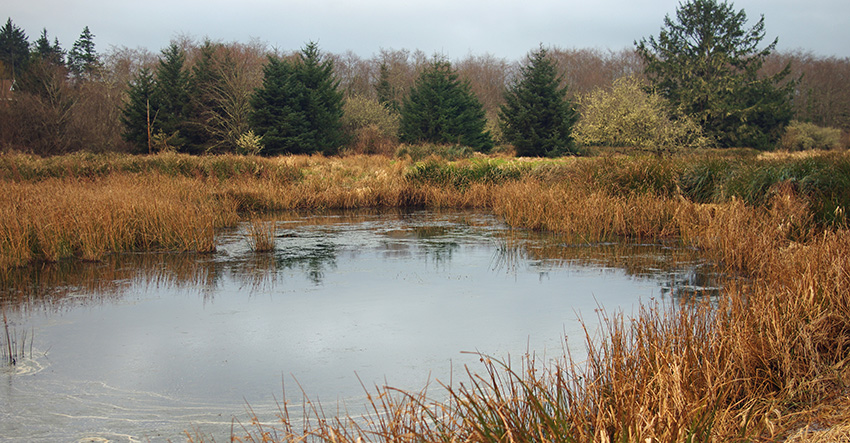
Wahanna Marsh in the fall
This didn’t seem to matter to her as we scrambled down the roadside bank into a thick mass of brush and stickers. We picked our way though and finally staggered out into a sea of big clumpy, marshy grasses up to my chest with holes and ditches filled with water waiting to be stepped into. We headed out into the center of the marsh to a small bushy tree and stopped. This was the designated photo point for this habitat reserve, out in the center of what to me was a very alien place. I considered myself pretty good at native plants after a lifetime of walking in the woods, but this was different. I hadn’t really been in a place like this since I was a kid. I remember we walked around mostly looking at the invasive plants. Then we waded through a pond and cut our way back out through the giant blackberry hedge that ran along the road. We’d pretty much covered the site, except for the far northeast corner, which was just a mess of brambles and bushes guarded by a big pond and a huge spruce snag.
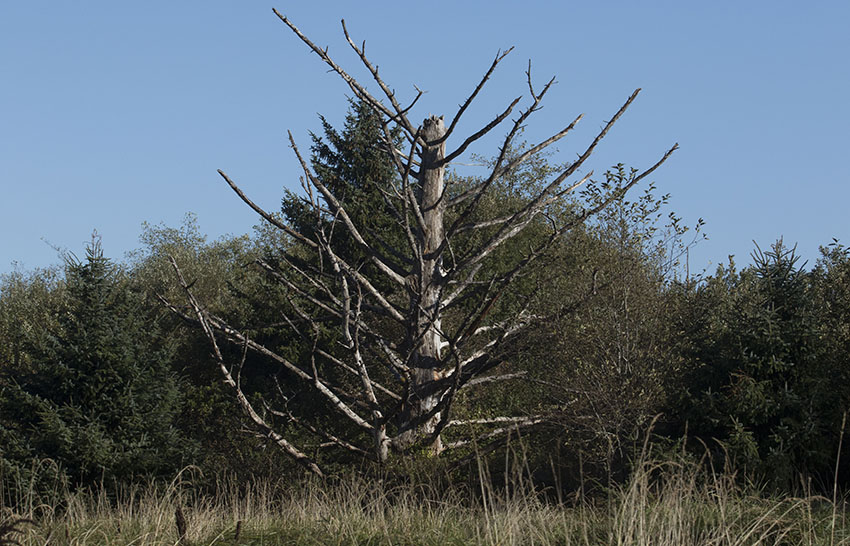

So now I was a site steward, and this was my place to watch. I’d struggle out through the brush every three months or so and walk around, looking at stuff. At first I began to really look at our photo point. It was a small, bushy tree, a crabapple, but large by crabapple standards, and it had seen better days. It kind of listed to one side and rested on an old branch that lay along the ground and no longer had leaves. Some people might say the branch was dead. Actually I saw it as still part of the tree, propping it up and helping keep it from falling into the mud. The tree was covered with lichens that coated the bark and hung down from its twisted branches. It was the eyes of age, and had been out here a long, long time. I’d never thought much about our little native tree, the western crabapple. I began to refer to this one as Methuselah.
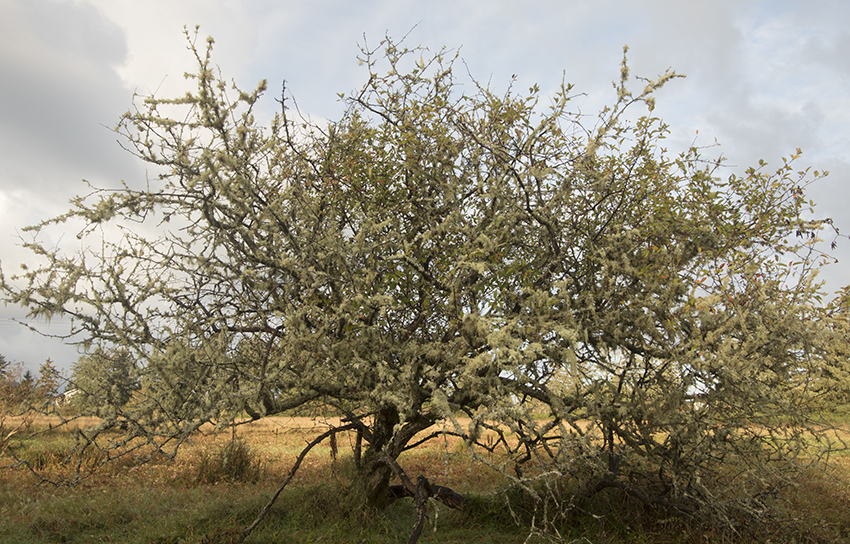

So as they do, the years kept clicking by, and gradually I began to get to know my little marsh. One year, two years, it takes a while. The stewardship approach listed for this property is “protection”—not needing major enhancement. I think the idea would be to keep it in good shape without having to schedule any work parties. It’s not really required of site stewards, but there’s always something that needs doing: a little ivy to pull, holly to cut, reed canary grass to measure, a small patch of Scotch broom to wrestle. What’s interesting about this place is that it’s not a natural wetland being invaded by human development. Quite the opposite. It’s an old farm slowly becoming a tidal marsh.


Crabapple in the rose briar patch
This is a small place by NCLC standards, just under six acres, but it feels much bigger probably because it’s surrounded by other open land owned by the city. It’s fairly easy to monitor once you get in there—well, OK, except for that brushy mess over in the northeast corner. I never went there. I’d look over and see a huge clump of ivy up in a tree that stood in the middle of all those thorns and bushes, completely out of reach. The ivy had essentially replaced the tree crown and was destined to either shade it out completely or just topple it over.
Finally, after two years, I took a closer look.
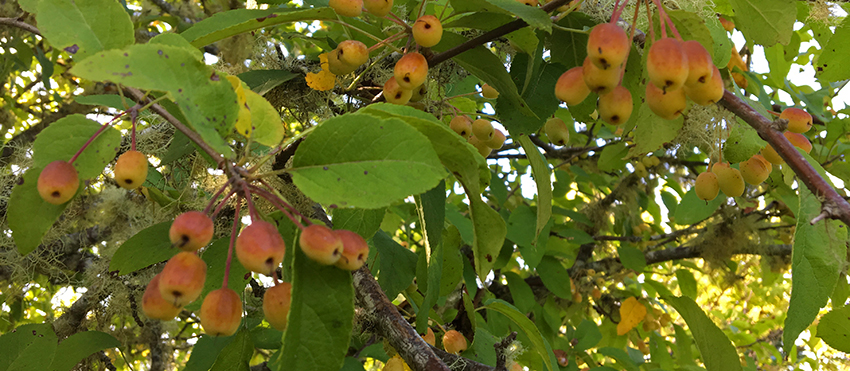

It was a good summer for crabapples in the marsh.
By now I’d learned a lot about this place. As I got closer to the corner, I realized that this mess of bushes and brambles I’d been looking at was actually an amazing bower of native Nootka roses that reached up seven or eight feet, along with salmonberry and elderberry and willows, oh my! It was still pretty impassible, but I guess you just have to start cutting somewhere. Well, OK, this looks like a good spot, and finally there I was, after tunneling around and through and under, at the base of a big old crabapple tree growing in a carpet of false lily-of-the-valley. The trunk of the tree was completely obscured by huge old-growth ivy vines that would require much bigger tools than those I had used to get in there. I turned around and slithered back out. Then once I was out in the open I decided to head straight out to the road, cutting blackberry and whatever. And then just like that I was standing on Wahanna Road! Who knew? This was by far the easiest way to get in and out of the marsh.
So then two weeks later I was back at the base of that crabapple tree, this time with loppers, a crowbar, a pruning saw and a hatchet! I spent almost two hours pounding and cutting and pulling on ivy, chopping below the root crown of the ivy and prying off those huge tree trunk-like vines that surrounded the actual tree trunk. I crawled back out my secret entryway and looked back. There in the middle of those wild roses was a stately old crabapple, looking somewhat worse for wear, but the ivy was gone. What a feeling!


So in the years since that day, my favorite part of this marsh has turned out to be that forbidding northeast corner. I always enter and leave from the trail that I brushed out in 2014. The north border is actually a small creek called China Creek that has been the site of three beaver dams since I’ve been watching. And now it’s spring of 2017, and I look over at my favorite crabapple to see a small patch of ivy growing along one of the lower branches. This does not make me angry, or sad, or frustrated. It was expected. On my next trip I brought along some pruning tools, only to find out that I needed bigger tools. So I was back a week later, this time with a pruner, a hammer, and a large screwdriver. Another hour or so at the tree and I think we’ve got it this time.
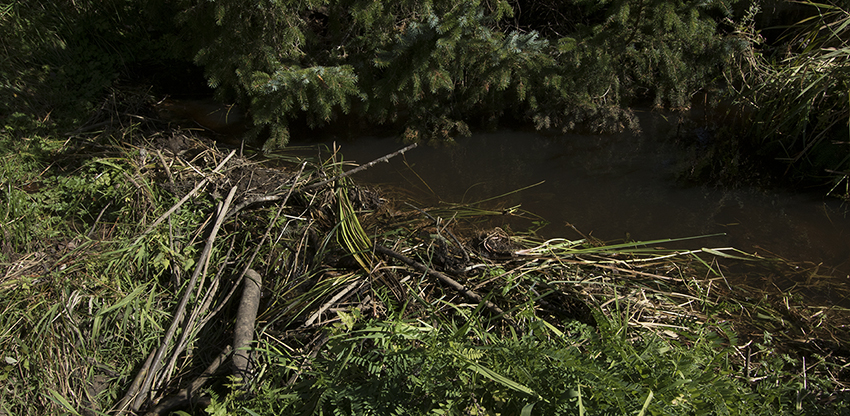

One of many beaver dams at Wahanna Marsh
When I was finished I walked out into the marsh to do my usual tour. Out in the center of the marsh a little yellow potentilla called silverweed was beginning to form a carpet that would soon cover all of the open ground out here. Later in the summer Douglas aster will be blooming next to those spruces. I walked over by the ponds that line the marsh on the east side, making my way through those large mounds of slough sedges and the smaller soft rushes and Baltic rushes. In the little wet sinkholes there were seashore bulrush, carefully marking those wet spots where you really shouldn’t step. Out in the pond the water had receded and a beautiful, light green carpet of ovoid spikerush was coming up through the shallow water. On the far bank a hedge of Impatiens capensis had taken its usual place. There was a single male bufflehead swimming over by the south end of the pond.
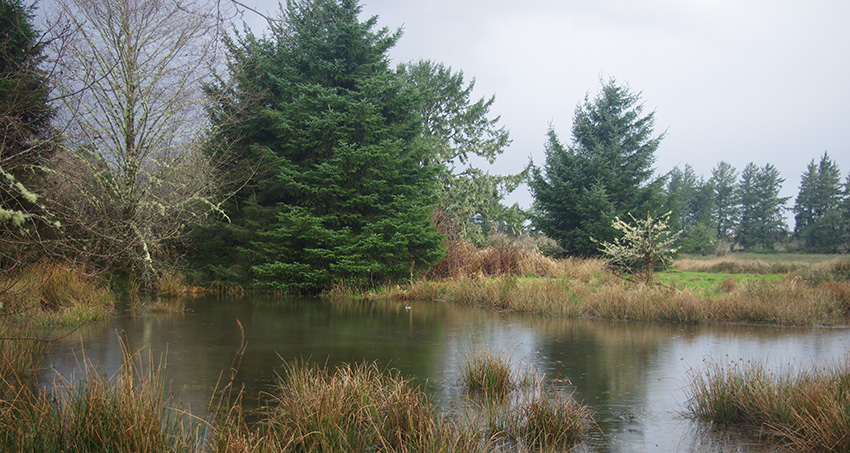

Looking west across the pond; a bufflehead swims near the far bank.
I walked out to that old photo point crabapple. It had a rough year last year for some reason, but this spring it had come back strong. There’ll be lots of fruit in the fall. I sat down under the tree and thought about our mutual friend over in the middle of those wild roses. I really did a job this time on the ivy vines. I don’t think it’ll be back for a while, but then that’s how I always feel. As long as I’m here, that beautiful tree will be OK. That’s just the way it is. We need each other.


The other day I took my grandson Caden out onto this marsh to help him get some volunteer hours he needed for school. We walked in by the new north trail and skirted the north side of my rose briar patch, complete with that beautiful, large crabapple in the center. We walked past the latest beaver dam on China Creek and then through a small grove of Sitka spruce. As we walked out of the trees and on to the open marsh, Caden stopped and looked around. “Wow,” he said, “this is just like the beach in Shawshank Redemption.” I smiled. What a perfect teenage metaphor. This is that special place where you’ve always dreamed of being.
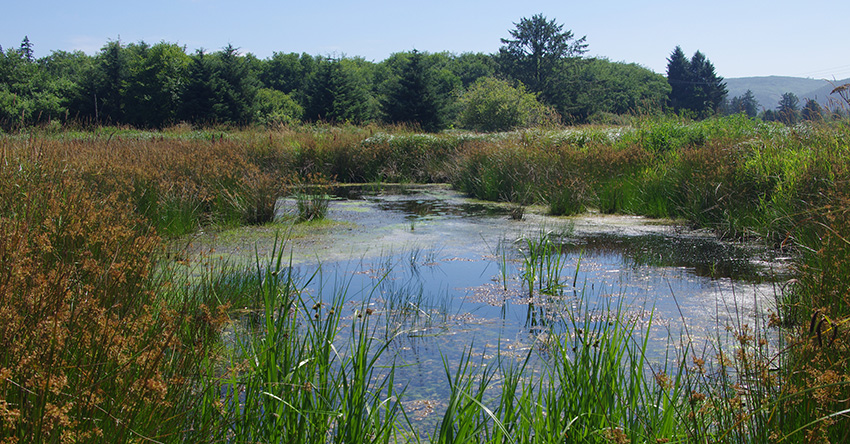

Wahanna Marsh in summer
Comments